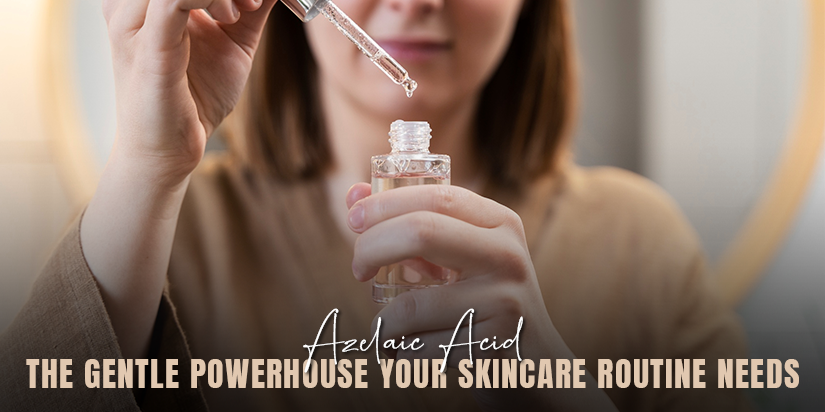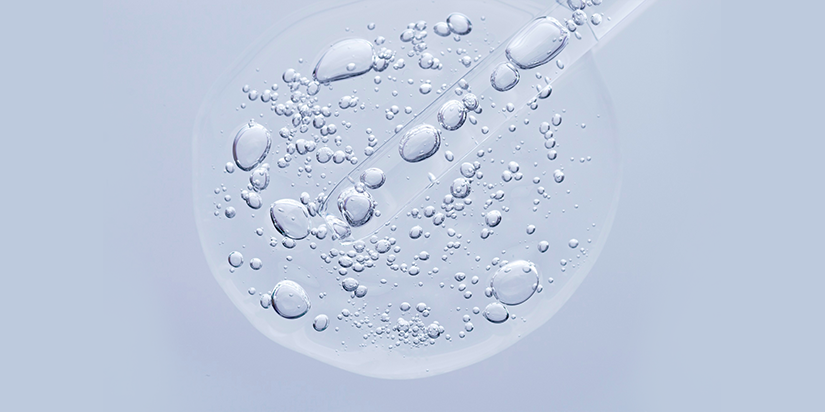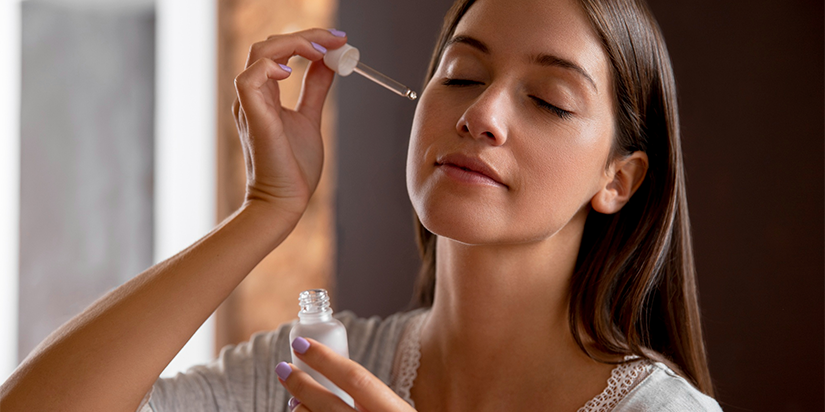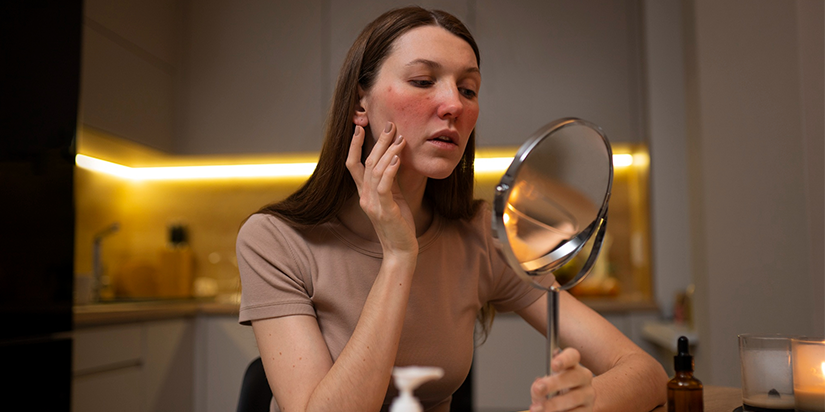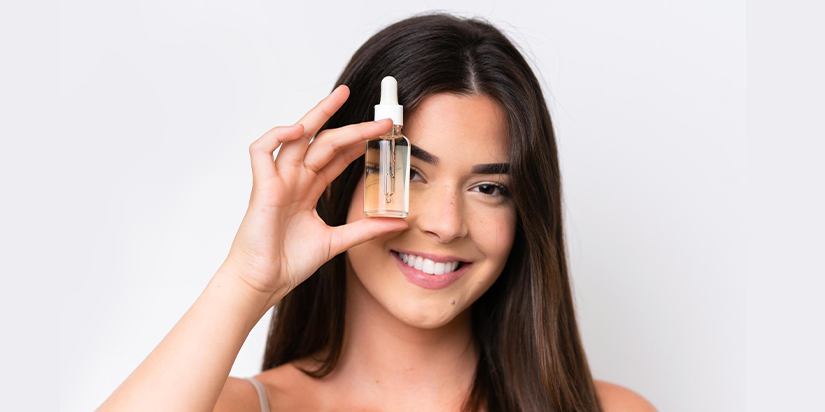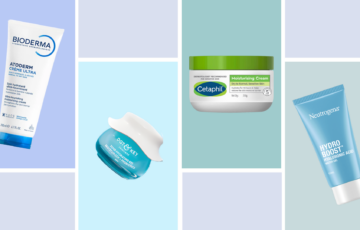In the crowded world of skincare actives, where ingredients like retinol, niacinamide, and vitamin C often steal the spotlight, azelaic acid quietly works behind the scenes, repairing, soothing, and brightening skin with remarkable consistency. Though often overlooked, it’s one of the few multitasking ingredients that suits almost every skin type, including the most sensitive.
What Exactly Is Azelaic Acid?
Azelaic acid is a naturally occurring acid derived from grains like barley, wheat, and rye, though most skincare formulations use a lab-made version for stability and purity. It belongs to a class called dicarboxylic acids, known for their gentle exfoliating and antibacterial properties.
What makes it special is its ability to address multiple skin concerns at once, from acne and redness to dark spots and texture irregularities, without the harsh side effects associated with stronger acids.
Why Dermatologists Love It
Few ingredients can calm irritation while also improving breakouts and pigmentation, but azelaic acid manages all three effortlessly. Dermatologists often recommend it for people who can’t tolerate retinoids or alpha hydroxy acids, yet still want visible results.
Here’s why it’s often a go-to prescription:
- Anti-Inflammatory Power: It helps soothe redness and swelling, particularly for those dealing with rosacea or inflamed acne.
- Antibacterial Action: It targets acne-causing bacteria (Cutibacterium acnes), reducing the frequency and severity of breakouts.
- Pigmentation Control: By slowing down the enzyme tyrosinase, it helps fade post-acne marks, melasma, and sun spots, leading to a more even complexion.
- Gentle Exfoliation: It unclogs pores without stripping the skin, encouraging a smoother surface and refined texture.
Who Should Use Azelaic Acid?
One of azelaic acid’s biggest advantages is its universality. Whether your skin is oily, dry, combination, or sensitive, this ingredient adjusts comfortably.
It’s particularly beneficial for:
- Acne-prone skin: Helps treat active pimples and prevents new ones from forming.
- Rosacea-prone skin: Reduces redness and visible bumps without irritation.
- Pigmentation and melasma: Gradually lightens uneven tone and discoloration.
- Sensitive skin: Offers mild exfoliation without the sting or burn common with other acids.
Even those who are pregnant or breastfeeding can use azelaic acid (under medical guidance), as it’s considered one of the few dermatologist-approved actives during that time.
How to Use Azelaic Acid in Your Routine
Azelaic acid typically comes in creams, gels, or serums ranging from 10% to 20% concentration.
If you’re new to it, start slow:
- Cleanse gently and pat your face dry.
- Apply azelaic acid once daily, ideally in the evening.
- Follow up with moisturizer to maintain hydration.
- Use sunscreen every morning, as consistent protection enhances its brightening effects.
Over time, your skin can build tolerance, allowing you to use it twice a day or layer it with other actives like niacinamide or hyaluronic acid.
Pairing It with Other Skincare Ingredients
Azelaic acid plays well with most ingredients, which makes it easy to fit into your current skincare routine.
- With Niacinamide: A soothing duo that brightens and strengthens the skin barrier.
- With Retinol: They can be alternated on different nights to target both acne and aging.
- With Vitamin C: Use azelaic acid in the evening and vitamin C in the morning for an amplified glow.
However, combining it directly with strong exfoliants (like glycolic or salicylic acid) can cause temporary irritation, so it’s best to introduce those gradually.
Over-the-Counter vs. Prescription Options
If you’re exploring over-the-counter choices, you’ll find azelaic acid in 10% formulations like The Ordinary Azelaic Acid Suspension or Paula’s Choice 10% Booster. These are ideal for mild acne and uneven tone.
For more stubborn issues such as rosacea or melasma, dermatologists may recommend prescription-strength options like Finacea (15%) or Azelex (20%), which deliver faster, more targeted results.
Visible Results: What to Expect
Patience is key. Azelaic acid works steadily, not suddenly.
You may notice subtle improvements, calmer skin, fewer breakouts, or a more even tone, within 4 to 8 weeks of consistent use. Its true beauty lies in long-term transformation: smoother, brighter, and healthier-looking skin with minimal irritation along the way.
Final Thoughts
Azelaic acid may not have the dramatic reputation of retinol or the instant gratification of exfoliating acids, yet its quiet effectiveness earns it a well-deserved place in any thoughtful skincare routine. It’s the kind of ingredient that doesn’t shout for attention, it simply delivers.
If your skin often feels caught between sensitivity and stubbornness, azelaic acid might just be the balance it’s been waiting for.
Love exploring skincare and beauty trends? Keep following Dazzlerr for more.

